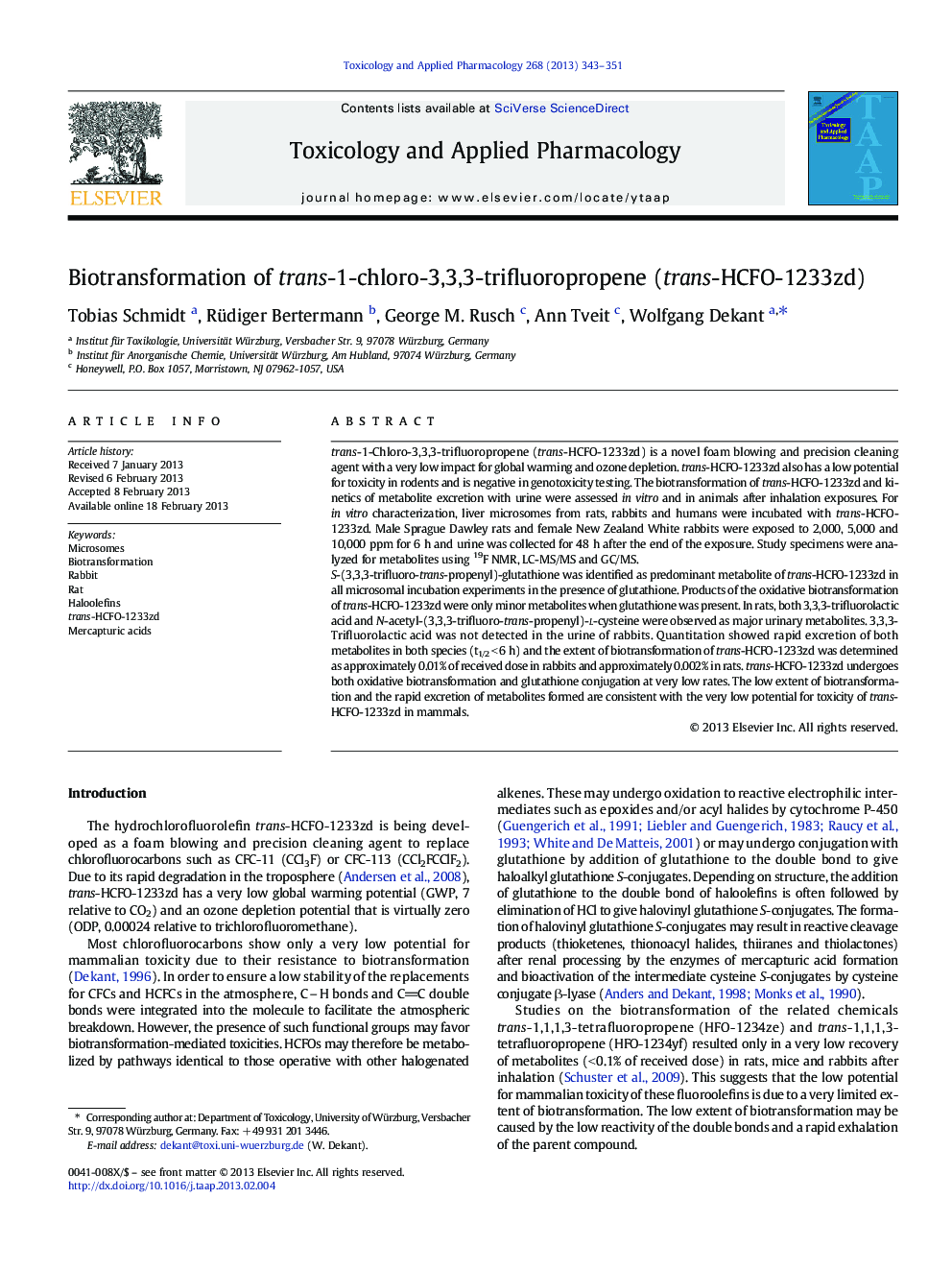| کد مقاله | کد نشریه | سال انتشار | مقاله انگلیسی | نسخه تمام متن |
|---|---|---|---|---|
| 2568806 | 1128485 | 2013 | 9 صفحه PDF | دانلود رایگان |

trans-1-Chloro-3,3,3-trifluoropropene (trans-HCFO-1233zd) is a novel foam blowing and precision cleaning agent with a very low impact for global warming and ozone depletion. trans-HCFO-1233zd also has a low potential for toxicity in rodents and is negative in genotoxicity testing. The biotransformation of trans-HCFO-1233zd and kinetics of metabolite excretion with urine were assessed in vitro and in animals after inhalation exposures. For in vitro characterization, liver microsomes from rats, rabbits and humans were incubated with trans-HCFO-1233zd. Male Sprague Dawley rats and female New Zealand White rabbits were exposed to 2,000, 5,000 and 10,000 ppm for 6 h and urine was collected for 48 h after the end of the exposure. Study specimens were analyzed for metabolites using 19F NMR, LC-MS/MS and GC/MS.S-(3,3,3-trifluoro-trans-propenyl)-glutathione was identified as predominant metabolite of trans-HCFO-1233zd in all microsomal incubation experiments in the presence of glutathione. Products of the oxidative biotransformation of trans-HCFO-1233zd were only minor metabolites when glutathione was present. In rats, both 3,3,3-trifluorolactic acid and N-acetyl-(3,3,3-trifluoro-trans-propenyl)-l-cysteine were observed as major urinary metabolites. 3,3,3-Trifluorolactic acid was not detected in the urine of rabbits. Quantitation showed rapid excretion of both metabolites in both species (t1/2 < 6 h) and the extent of biotransformation of trans-HCFO-1233zd was determined as approximately 0.01% of received dose in rabbits and approximately 0.002% in rats. trans-HCFO-1233zd undergoes both oxidative biotransformation and glutathione conjugation at very low rates. The low extent of biotransformation and the rapid excretion of metabolites formed are consistent with the very low potential for toxicity of trans-HCFO-1233zd in mammals.
► No lethality and clinical signs were observed.
► Glutathione S-transferase and cytochrome P-450 dependent biotransformation in vivo.
► Low biotransformation (< 0.01%) and fast metabolite excretion (t1/2 < 6 h).
► Glutathione adduct as predominant in vitro metabolite in all tested species.
► Toxic metabolites could not be detected in any great extent.
Journal: Toxicology and Applied Pharmacology - Volume 268, Issue 3, 1 May 2013, Pages 343–351